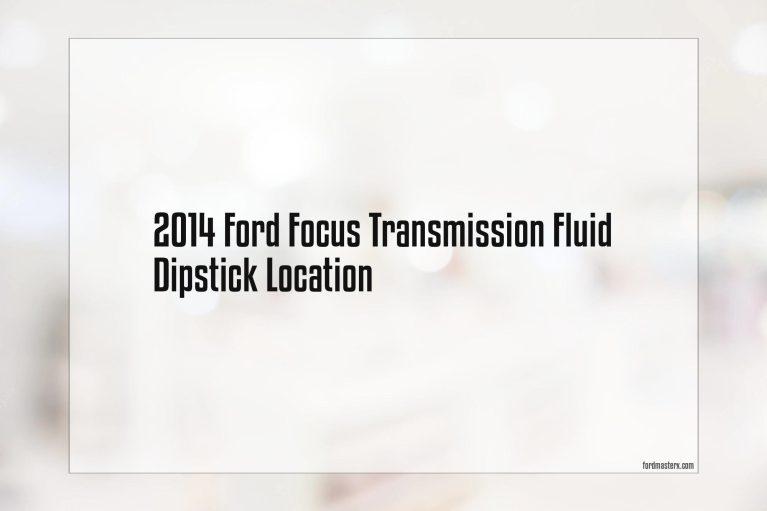Ford Adaptive Learning Transmission Reset
The Ford Adaptive Learning Transmission is a feature that allows the transmission control module (TCM) to learn and adapt to a driver’s specific driving habits and conditions. This technology helps provide smoother shifts, better performance, and increased fuel efficiency.
However, issues can arise when the adaptive learning function isn’t working correctly, leading to erratic shifting, reduced fuel efficiency, and poor performance. To address these issues, performing a Ford Adaptive Learning Transmission Reset is necessary.
This process involves resetting the TCM and allowing it to relearn the driver’s habits and conditions, optimizing the shifting behavior for smoother and more efficient shifts. In this way, a Ford Adaptive Learning Transmission Reset can help restore the vehicle’s optimal performance and driving experience.
Clearing F150 Adaptive Shifting Tables w/FORScan – Hard Shifting / Clunking
What is Adaptive Learning Transmission
Adaptive Learning Transmission is a feature in modern automatic transmissions that allows the transmission control module (TCM) to “learn” and adapt to a driver’s specific driving habits and conditions. This technology helps provide smoother shifts, better performance, and increased fuel efficiency.
The TCM monitors various parameters, such as throttle position, engine speed, vehicle speed, and load, to determine the optimal shift points for the transmission. Over time, the TCM collects data on the driver’s style and the specific conditions in which the vehicle operates.
Using this information, the TCM adjusts the shift points and pressure within the transmission to ensure the smoothest and most efficient shifts possible.
Adaptive Learning Transmission benefits include:
- Improved shift quality: By adapting to a driver’s habits and the conditions of the road, the transmission can deliver smoother and more comfortable shifts.
- Better fuel efficiency: When the TCM adjusts shift points and pressure for optimal efficiency, the engine operates at a more fuel-efficient RPM range, reducing fuel consumption.
- Prolonged transmission life: Smoother and more efficient shifts can help reduce wear and tear on the transmission components, extending the overall life of the transmission.
- Customized driving experience: Adaptive Learning Transmission tailors the shifting behavior of the transmission to the individual driver, creating a more personalized driving experience.
It’s important to note that if the battery is disconnected or the TCM is reset, the adaptive learning data may be lost, and the transmission may revert to its default shift points. In this case, the transmission will need to relearn the driver’s habits and driving conditions, which may take some time, and drive under various conditions.
Read Also:
What is adaptive learning transmission reset?
An adaptive learning transmission reset is a process that clears the learned data from the transmission control module (TCM) in a vehicle equipped with an adaptive learning transmission system. This process is performed when there is a need to erase the stored data in the TCM, such as after certain repairs, or to address specific transmission-related issues.
By resetting the adaptive learning transmission, the TCM’s memory is cleared, and it will revert to its factory default settings. This means that the TCM will no longer have the driver-specific data that it used to optimize shifting behavior for smoother shifts, fuel efficiency, and overall performance.
After the adaptive learning transmission reset, the TCM will need to relearn the driver’s habits and the driving conditions, which may take some time and require driving under various conditions. During this learning process, the driver may notice different shift patterns or less smooth shifting than before, but this should improve as the TCM re-adapts to the driver’s style.
It’s essential to note that resetting the adaptive learning transmission may not resolve more severe transmission issues, and it’s always a good idea to consult a professional mechanic if you’re experiencing persistent problems with your vehicle’s transmission.
When should you do a Ford adaptive learning transmission reset?
A Ford adaptive learning transmission reset may be necessary for certain situations to address specific transmission-related issues or after certain repairs have been made. Some instances where you might consider performing an adaptive learning transmission reset include: – After experiencing abnormal shifting behavior or harsh gear changes – If you have recently replaced the transmission or performed any work on the transmission system – After encountering issues such as the ford f150 rear window leak, which could potentially affect the vehicle’s transmission performance and require a reset to relearn optimal shifting patterns.
After transmission repairs or replacement:
If you’ve had significant work done on your transmission, such as rebuilding, repair, or replacement, a reset can help the transmission control module (TCM) start fresh and adapt to the newly serviced components.
After TCM replacement or software update:
If your Ford’s TCM has been replaced or had a software update, a reset may be necessary for the TCM to properly adapt to the new software or hardware.
Shift quality issues:
If you’re experiencing erratic or rough shifting and have ruled out other possible causes (such as low transmission fluid or a faulty sensor), an adaptive learning transmission reset might help the TCM relearn the correct shift points and pressures.
Change in driving habits or conditions:
If there has been a significant change in driving habits, such as switching from city to highway driving or from a flat to a hilly terrain, a reset might help the TCM adapt more quickly to the new conditions.
See Also:
- 2008 Ford Escape Wrench Light Reset
- 2011 Ford Escape Wrench Warning Light
- 2001 Ford F150 Xlt Triton V8 Specs
After disconnecting the battery:
If the battery has been disconnected for an extended period or replaced, the TCM might lose its adaptive learning data. A reset can help the TCM start the relearning process.
It’s important to remember that an adaptive learning transmission reset is not a guaranteed solution for all transmission-related issues. If you’re experiencing persistent problems, it’s best to consult a professional mechanic for proper diagnosis and repair.
Ford adaptive learning transmission problems?
Ford transmission control module (TCM) problems can manifest in a variety of ways, leading to issues with shifting, performance, and drivability. Common TCM issues in Ford vehicles include:
Erratic shifting:
The TCM is responsible for controlling shift timing, so if it’s not functioning correctly, you may experience jerky or abrupt shifts, delayed shifting, or even the transmission getting stuck in a particular gear.
Poor performance:
If the TCM isn’t sending the right signals to the transmission, your vehicle’s performance may suffer. This can result in a lack of power, reduced acceleration, and poor fuel economy.
Warning lights:
TCM problems can trigger warning lights on your dashboard, such as the “Check Engine” light or a specific transmission warning light.
Transmission overheating:
A malfunctioning TCM may not properly regulate transmission fluid pressure, leading to overheating and potential damage to the transmission.
“Limp mode”:
In some cases, the vehicle may enter a “limp mode” to protect the transmission from further damage. This typically limits your speed and disables certain features until the problem is resolved.
If you suspect a problem with your Ford’s TCM, it’s important to have it diagnosed and repaired by a professional mechanic. They can use specialized tools to read any stored trouble codes and determine the root cause of the issue. In some cases, a software update or TCM replacement may be necessary to resolve the problem.
How to Ford Adaptive Learning transmission reset
Performing a Ford adaptive learning transmission reset involves a series of steps to reset the transmission control module (TCM) and help it relearn the optimal shift points. Please note that this process may not resolve more severe transmission issues, which may require professional diagnosis and repair. Follow these steps to perform a Ford adaptive learning transmission reset:
Warm up the engine:
Start your Ford vehicle and let it idle for a few minutes until it reaches its normal operating temperature. This ensures the transmission fluid is also at the proper temperature for the reset procedure.
Find a safe location:
Choose a flat and level surface, such as a driveway or parking lot, to perform the reset.
Shift through the gears:
With your foot on the brake, shift your vehicle into reverse, then into drive, and finally into neutral. Pause for a few seconds in each gear position to give the transmission time to engage.
Accelerate gradually:
Slowly accelerate to around 25 mph (40 km/h) and then release the accelerator, allowing the vehicle to coast to a stop. Repeat this process a few times to help the transmission relearn the shift points.
Turn off the engine:
Once you’ve completed the above steps, turn off the engine and remove the key from the ignition.
Disconnect the battery:
Locate the battery and disconnect the negative battery cable. This will reset the TCM and clear any stored error codes.
Wait and reconnect:
Leave the battery disconnected for at least 15-30 minutes, then reconnect the negative battery cable.
This allows the TCM enough time to fully reset.
Drive your vehicle:
Start your vehicle and take it for a drive, making sure to shift through all the gears. This will allow the TCM to relearn the proper shift points and adapt to your driving style.
Remember, this procedure is intended for minor issues only. If you’re experiencing persistent transmission problems or warning lights on your dashboard, it’s best to consult a professional mechanic for proper diagnosis and repair.
ford adaptive learning transmission reset for scan
FORScan is a software tool that allows users to access and modify the configurations of their Ford, Lincoln, Mazda, and Mercury vehicles’ control modules, including the transmission control module (TCM). With FORScan, you can perform an adaptive learning transmission reset on your Ford vehicle. To do this, follow the steps below:
- Acquire necessary hardware and software: You will need a compatible OBD-II adapter (such as ELM327) and the FORScan software installed on your computer. Ensure your adapter is compatible with your vehicle and the FORScan software.
- Connect to your vehicle: Plug the OBD-II adapter into your vehicle’s OBD-II port, which is usually located under the dashboard on the driver’s side. Connect the adapter to your computer using the appropriate cable (USB, Bluetooth, or Wi-Fi).
- Run FORScan: Launch the FORScan software on your computer, and make sure the connection to your vehicle is established.
- Locate the TCM: Once connected, navigate through the FORScan software to find the transmission control module (TCM). It is usually identified by a code that starts with “TCM” or “PCM”.
- Access the TCM: In the FORScan software, select the TCM, and enter the module programming section.
- Reset the adaptive learning: Look for the “Reset Transmission Adaptive Learning” function or a similar option within the TCM programming. Select this function, and follow the on-screen prompts to perform the reset.
- Complete the process: Once the adaptive learning reset is complete, turn off your vehicle, disconnect the OBD-II adapter, and remove the key from the ignition.
- Relearn driving habits: After performing the reset, the TCM will need to relearn your driving habits and adapt to the driving conditions. Drive your vehicle under various conditions, making sure to shift through all the gears, allowing the TCM to optimize shift points and pressures accordingly.
Please note that modifying your vehicle’s control modules using FORScan can potentially cause issues if not done correctly. Proceed with caution, and if you’re unsure about the process, consult a professional mechanic or a FORScan expert for assistance.

Credit: www.reddit.com
FAQs:
Can I reset the Ford Adaptive Learning Transmission myself?
Yes, you can reset the Ford Adaptive Learning Transmission yourself by disconnecting the battery or using an OBD2 scanner.
However, it is recommended to seek professional assistance to ensure the reset is done correctly.
How often should I reset the Ford Adaptive Learning Transmission?
The frequency of resetting the Ford Adaptive Learning Transmission depends on several factors, including driving habits and conditions.
It is recommended to have a professional mechanic assess the need for a reset during routine maintenance
What happens if I don’t reset the Ford Adaptive Learning Transmission?
If you don’t reset the Ford Adaptive Learning Transmission, the accumulated driving data can lead to performance issues, such as delayed shifts, rough shifts, and slipping gears.
A reset helps erase this data and improve the transmission’s performance
Conclusion
the Ford Adaptive Learning Transmission system is a significant advancement in automatic transmission technology, allowing for smoother shifts, better performance, and increased fuel efficiency.
However, when issues arise with the system, such as erratic shifting or reduced fuel efficiency, performing an Adaptive Learning Transmission Reset may be necessary. By resetting the TCM and allowing it to relearn the driver’s habits and conditions, this process can optimize the shifting behavior and help restore the vehicle’s optimal performance and driving experience.
If you’re experiencing persistent transmission issues or warning lights, it’s essential to consult a professional mechanic for proper diagnosis and repair. With proper maintenance and care, the Ford Adaptive Learning Transmission system can provide a smooth and efficient driving experience for years to come.
See More:
- Check Engine Light Ford Escape
- Ford Fusion Check Engine Light
- Park Brake Malfunction Service Now



